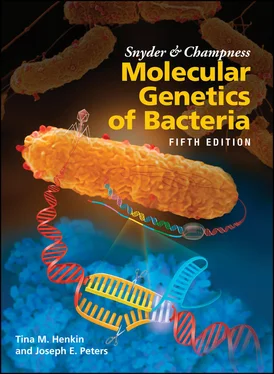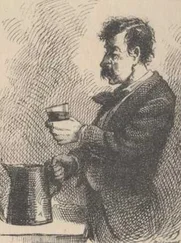The signal sequence recognized by the Tat system is structurally similar to the signal sequence recognized by the Sec system, with a positively charged region followed by a longer hydrophobic region and a polar region, and is cleaved from the protein as it passes through the channel. However, it is somewhat longer, especially in the positively charged region. Two of the positively charged amino acids at the junction of the charged and hydrophobic regions are usually arginines, which give the Tat system its name (twin-arginine transport). The arginines are found in the motif S-R-R, although the first of the twin arginines is sometimes a lysine (K). This sequence is followed by two hydrophobic amino acids, usually F and L, and then often by a K.
The presence of this particular signal sequence at the N terminus of a newly synthesized protein targets the protein for transport by the Tat system rather than by the SecYEG channel. This raises an interesting question. How does the system know the protein has already folded properly and contains all the needed cofactors, etc., so that it is time to transport it? The Tat system needs a “quality control” system to ensure that it transports only properly folded proteins and does not transport proteins that are unfolded or only partially folded. This quality control system should also be specific for each protein to be transported, since each type of folded protein has a unique structure (see above). E. coli solves this problem by encoding dedicated proteins that specifically bind to the Tat signal sequence of only one type of protein and come off only when that protein has folded properly (see Palmer et al., Suggested Reading).
Tat Systems in Other Organisms
Most bacteria and archaea, as well as the chloroplasts of plants (which descended from cyanobacteria [see the introduction]), have a Tat secretion system, although they might differ from that of E. coli in the number of subunits. Some bacteria, including B. subtilis , have two or more Tat systems. Some of them are dedicated to the transport of only one or very few proteins.
Another characteristic of proteins that are exported to the periplasm or secreted outside the cell is that many of them have disulfide bonds between cysteines (see the inside front cover). In other words, two of the cysteines in the protein are held together by covalent bonds between their sulfides. The sulfur atom of a cysteine in a disulfide bond is in its oxidized form because one of its electrons is shared by the two sulfurs, while the sulfur atom of an unbound cysteine is in its reduced form because it has an extra electron. These disulfide bonds can be between two cysteines in the same polypeptide chain or between cysteines in different polypeptide chains. Exported proteins need the covalent disulfide bonds to hold them together in the harsh environments of the periplasm and outside the cell. Failure to form the correct disulfide bonds or formation of disulfide bonds between the wrong cysteines can result in inactivity of the protein.
The disulfide bonds in proteins are formed by enzymes called disulfide oxidoreductases(DsbA, DsbB, etc.) as the proteins pass through the oxidizing environment in the periplasmic space between the inner and outer membranes of bacteria that contain outer membranes (or at the outer cell surface of bacteria that lack the outer membrane and periplasm). Proteins that are found inside the cell in the cytoplasm lack disulfide bonds because of the “reducing atmosphere” inside the cytoplasm due to the presence of high concentrations of small reducing molecules, such as glutathione, thioredoxin, and bacillithiol. In fact, the appearance of disulfide bonds in some cytoplasmic regulatory proteins is taken as a signal by the cell that oxidizing chemicals are accumulating in the cell and that proteins should be made to combat the potentially lethal oxidative chemical stress.
Protein Secretion and Export
Some proteins are transported through the membrane(s) to the outside of the cell, where they can remain attached, enter the surrounding medium, or even directly enter another cell. The process differs markedly between cells that have or lack an outer membrane. Bacteria that have an outer membrane require translocation from the periplasm through the extremely hydrophobic outer membrane. Because of the additional challenge created by the outer membrane, these bacteria have developed elaborate specialized structures to export proteins. Many of these play important roles in bacterial pathogenesis, so they have attracted considerable attention.
Protein Secretion Systems in Bacteria with an Outer Membrane
At least six basic types of protein secretion systems, imaginatively named types I to VI, have been identified. All of these secretion systems rely on channels in the outer membrane (called β-barrels or secretins) formed from β-sheets organized in a ring (see Figure 2.20for an explanation of protein secondary and tertiary structures). The β-barrels are assembled so that the side chains of charged and polar amino acids tend to be in the center of the barrel, where they are in contact with hydrophilic proteins that are passing through, while the side chains of hydrophobic amino acids are on the outside of the barrel in contact with the very hydrophobic surrounding membrane. Assembly of the β-barrels requires a complex of proteins called the Bam complex (BamA, -B, -C, etc.) and periplasmic chaperones, including Skp.
Having channels in the outer membrane presents some of the same problems associated with having channels in the cytoplasmic membrane, such as the SecYEG channel. For example, how do they select the proteins that are to go through without letting others through, and how do they keep smaller molecules from going in and out? This process is called channel gating; the gate is open only when the protein being exported passes through. A second issue is the source of the energy to export a protein through the outer membrane. There is no ATP or GTP in the periplasmic space to provide energy, and the outer membrane is not known to have a proton gradient across it to create an electric field. In this section, we describe mechanisms used by the various secretion systems for solving these problems and mention some examples of proteins exported by each of the systems.
Type I secretion systems(T1SS) secrete a protein directly from the cytoplasm to the outside of the cell ( Figure 2.39). They are different from the other types of secretion systems and more closely related to a large family of ATP-binding cassette (ABC) transporters that export small molecules, including antibiotics and toxins, from the cell. The ABC transporters tend to be more specialized, exporting only certain molecules from the cell. To get the protein through the inner membrane, T1SS use a dedicated system that consists of two proteins, an ABC-type protein in the inner membrane and an integral membrane protein that bridges the inner and outer membranes. To get through the outer membrane, T1SS use a multiuse protein, TolC, that forms the β-barrel channel in the outer membrane. Because the TolC channel has other uses and also exports other molecules, including toxic compounds, from the cell, it is recruited to the T1SS only when the specific protein is to be secreted. When the molecule to be secreted binds to the ABC protein, the integral membrane protein recruits TolC, which then forms the β-barrel in the outer membrane. The cleavage of ATP by the ABC protein presumably provides the energy to push the secreted protein all the way through the TolC channel to the outside of the cell.
Читать дальше











